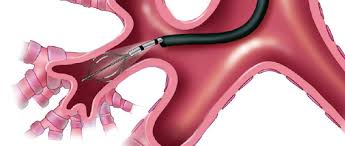
Asthma is a chronic disease involving the airways in the lungs. These airways, or bronchial tubes, allow air to come in and out of the lungs. If you have asthma your airways are always inflamed. They become even more swollen and the muscles around the airways can tighten when something triggers your symptoms.
Symptoms of asthma

Major asthma symptoms include:
- Airway blockage. When you breathe as usual, the bands of muscle around your airways are relaxed, and air moves freely. But when you have asthma, the muscles tighten. It’s harder for air to pass through.
- Inflammation . Asthma causes red, swollen bronchial tubes in your lungs. This inflammation can damage your lungs. Treating this is key to managing asthma in the long run.
- Airway irritability. People with asthma have sensitive airways that tend to overreact and narrow when they come into contact with even slight triggers.
Other symptoms include:
- Coughing, especially at night or in the morning
- Wheezing, a whistling sound when you breathe
- Shortness of breath
- Tightness, pain, or pressure in your chest
- Trouble sleeping because of breathing problems
Asthma classification

Asthma can be classified by its symptoms:
- Mild intermittent asthma. Mild symptoms less than twice a week. Nighttime symptoms less than twice a month. Few asthma attacks.
- Mild persistent asthma. Symptoms three to six times a week. Nighttime symptoms three to four times a month. Asthma attacks might affect activities.
- Moderate persistent asthma. Symptoms three to six times a week. Nighttime symptoms three to four times a month. Asthma attacks might affect activities.
- Severe persistent asthma. Ongoing symptoms both day and night. You have to limit your activities.
Diagnosis

Physical exam
Your doctor will perform a physical exam to rule out other possible conditions, such as a respiratory infection or chronic obstructive pulmonary disease (COPD). Your doctor will also ask you questions about your signs and symptoms and about any other health problems.
Tests to measure lung function
You may be given lung function tests to determine how much air moves in and out as you breathe. These tests may include:
- Spirometry. This test estimates the narrowing of your bronchial tubes by checking how much air you can exhale after a deep breath and how fast you can breathe out.
- Peak flow. A peak flow meter is a simple device that measures how hard you can breathe out. Lower than usual peak flow readings are a sign that your lungs may not be working as well and that your asthma may be getting worse. Your doctor will give you instructions on how to track and deal with low peak flow readings.
Lung function tests often are done before and after taking a medication to open your airways called a bronchodilator (brong-koh-DIE-lay-tur), such as albuterol. If your lung function improves with use of a bronchodilator, it’s likely you have asthma.
Additional tests
Other tests to diagnose asthma include:
- Methacholine challenge. Methacholine is a known asthma trigger. When inhaled, it will cause your airways to narrow slightly. If you react to the methacholine, you likely have asthma. This test may be used even if your initial lung function test is normal.
- Imaging tests. A chest X-ray can help identify any structural abnormalities or diseases (such as infection) that can cause or aggravate breathing problems.
- Allergy testing. Allergy tests can be performed by a skin test or blood test. They tell you if you’re allergic to pets, dust, mold or pollen. If allergy triggers are identified, your doctor may recommend allergy shots.
- Nitric oxide test. This test measures the amount of the gas nitric oxide in your breath. When your airways are inflamed — a sign of asthma — you may have higher than normal nitric oxide levels. This test isn’t widely available.
- Sputum eosinophils. This test looks for certain white blood cells (eosinophils) in the mixture of saliva and mucus (sputum) you discharge during coughing. Eosinophils are present when symptoms develop and become visible when stained with a rose-colored dye.
- Provocative testing for exercise and cold-induced asthma. In these tests, your doctor measures your airway obstruction before and after you perform vigorous physical activity or take several breaths of cold air.
Treatment

Prevention and long-term control are key to stopping asthma attacks before they start. Treatment usually involves learning to recognize your triggers, taking steps to avoid triggers and tracking your breathing to make sure your medications are keeping symptoms under control. In case of an asthma flare-up, you may need to use a quick-relief inhaler.
Medications
The right medications for you depend on a number of things — your age, symptoms, asthma triggers and what works best to keep your asthma under control.
Preventive, long-term control medications reduce the swelling (inflammation) in your airways that leads to symptoms. Quick-relief inhalers (bronchodilators) quickly open swollen airways that are limiting breathing. In some cases, allergy medications are necessary.
Long-term asthma control medications, generally taken daily, are the cornerstone of asthma treatment. These medications keep asthma under control on a day-to-day basis and make it less likely you’ll have an asthma attack. Types of long-term control medications include:
- Inhaled corticosteroids. These medications include fluticasone propionate (Flovent HFA, Flovent Diskus, Xhance), budesonide (Pulmicort Flexhaler, Pulmicort Respules, Rhinocort), ciclesonide (Alvesco), beclomethasone (Qvar Redihaler), mometasone (Asmanex HFA, Asmanex Twisthaler) and fluticasone furoate (Arnuity Ellipta).You may need to use these medications for several days to weeks before they reach their maximum benefit. Unlike oral corticosteroids, inhaled corticosteroids have a relatively low risk of serious side effects.
- Leukotriene modifiers. These oral medications — including montelukast (Singulair), zafirlukast (Accolate) and zileuton (Zyflo) — help relieve asthma symptoms.Montelukast has been linked to psychological reactions, such as agitation, aggression, hallucinations, depression and suicidal thinking. Seek medical advice right away if you experience any of these reactions.
- Combination inhalers. These medications — such as fluticasone-salmeterol (Advair HFA, Airduo Digihaler, others), budesonide-formoterol (Symbicort), formoterol-mometasone (Dulera) and fluticasone furoate-vilanterol (Breo Ellipta) — contain a long-acting beta agonist along with a corticosteroid.
- Theophylline. Theophylline (Theo-24, Elixophyllin, Theochron) is a daily pill that helps keep the airways open by relaxing the muscles around the airways. It’s not used as often as other asthma medications and requires regular blood tests.
Quick-relief (rescue) medications are used as needed for rapid, short-term symptom relief during an asthma attack. They may also be used before exercise if your doctor recommends it. Types of quick-relief medications include:
- Short-acting beta agonists. These inhaled, quick-relief bronchodilators act within minutes to rapidly ease symptoms during an asthma attack. They include albuterol (ProAir HFA, Ventolin HFA, others) and levalbuterol (Xopenex, Xopenex HFA).Short-acting beta agonists can be taken using a portable, hand-held inhaler or a nebulizer, a machine that converts asthma medications to a fine mist. They’re inhaled through a face mask or mouthpiece.
- Anticholinergic agents. Like other bronchodilators, ipratropium (Atrovent HFA) and tiotropium (Spiriva, Spiriva Respimat) act quickly to immediately relax your airways, making it easier to breathe. They’re mostly used for emphysema and chronic bronchitis, but can be used to treat asthma.
- Oral and intravenous corticosteroids. These medications — which include prednisone (Prednisone Intensol, Rayos) and methylprednisolone (Medrol, Depo-Medrol, Solu-Medrol) — relieve airway inflammation caused by severe asthma. They can cause serious side effects when used long term, so these drugs are used only on a short-term basis to treat severe asthma symptoms.
If you have an asthma flare-up, a quick-relief inhaler can ease your symptoms right away. But you shouldn’t need to use your quick-relief inhaler very often if your long-term control medications are working properly.
Keep a record of how many puffs you use each week. If you need to use your quick-relief inhaler more often than your doctor recommends, see your doctor. You probably need to adjust your long-term control medication.
Allergy medications may help if your asthma is triggered or worsened by allergies. These include:
- Allergy shots (immunotherapy). Over time, allergy shots gradually reduce your immune system reaction to specific allergens. You generally receive shots once a week for a few months, then once a month for a period of three to five years.
- Biologics. These medications — which include omalizumab (Xolair), mepolizumab (Nucala), dupilumab (Dupixent), reslizumab (Cinqair) and benralizumab (Fasenra) — are specifically for people who have severe asthma.
Bronchial thermoplasty

This treatment is used for severe asthma that doesn’t improve with inhaled corticosteroids or other long-term asthma medications. It isn’t widely available nor right for everyone.
During bronchial thermoplasty, your doctor heats the insides of the airways in the lungs with an electrode. The heat reduces the smooth muscle inside the airways. This limits the ability of the airways to tighten, making breathing easier and possibly reducing asthma attacks. The therapy is generally done over three outpatient visits.
Treat by severity for better control: A stepwise approach
Your treatment should be flexible and based on changes in your symptoms. Your doctor should ask about your symptoms at each visit. Based on your signs and symptoms, your doctor can adjust your treatment accordingly.
For example, if your asthma is well controlled, your doctor may prescribe less medication. If your asthma isn’t well controlled or is getting worse, your doctor may increase your medication and recommend more-frequent visits.
Asthma action plan
Work with your doctor to create an asthma action plan that outlines in writing when to take certain medications or when to increase or decrease the dose of your medications based on your symptoms. Also include a list of your triggers and the steps you need to take to avoid them.
Your doctor may also recommend tracking your asthma symptoms or using a peak flow meter on a regular basis to monitor how well your treatment is controlling your asthma.
Lifestyle and home remedies

Although many people with asthma rely on medications to prevent and relieve symptoms, you can do several things on your own to maintain your health and lessen the possibility of asthma attacks.
Avoid your triggers
Taking steps to reduce your exposure to asthma triggers is a key part of asthma control. To reduce your exposure, you should:
- Use your air conditioner. Air conditioning reduces the amount of airborne pollen from trees, grasses and weeds that finds its way indoors. Air conditioning also lowers indoor humidity and can reduce your exposure to dust mites. If you don’t have air conditioning, try to keep your windows closed during pollen season.
- Decontaminate your decor. Minimize dust that may worsen nighttime symptoms by replacing certain items in your bedroom. For example, encase pillows, mattresses and box springs in dustproof covers. Avoid using down-filled pillows and blankets. Throughout the house, remove carpeting and install hardwood or linoleum flooring. Use washable curtains and blinds.
- Maintain optimal humidity. If you live in a damp climate, talk to your doctor about using a dehumidifier.
- Prevent mold spores. Clean damp areas in the bathroom, kitchen and around the house to keep mold spores from developing. Get rid of moldy leaves or damp firewood in the yard.
- Reduce pet dander. If you’re allergic to dander, avoid pets with fur or feathers. Having pets regularly bathed or groomed may also reduce the amount of dander in your surroundings.
- Clean regularly. Clean your home at least once a week. If you’re likely to stir up dust, wear a mask or have someone else do the cleaning. Wash your bedding regularly.
- Cover your nose and mouth if it’s cold out. If your asthma is worsened by cold or dry air, wearing a face mask can help.
Stay healthy

Taking care of yourself can help keep your symptoms under control, including:
- Get regular exercise. Having asthma doesn’t mean you have to be less active. Treatment can prevent asthma attacks and control symptoms during activity.Regular exercise can strengthen your heart and lungs, which helps relieve asthma symptoms. If you exercise in cold temperatures, wear a face mask to warm the air you breathe.
- Maintain a healthy weight. Being overweight can worsen asthma symptoms, and it puts you at higher risk of other health problems.
- Control heartburn and gastroesophageal reflux disease (GERD). It’s possible that the acid reflux that causes heartburn may damage lung airways and worsen asthma symptoms. If you have frequent or constant heartburn, talk to your doctor about treatment options. You may need treatment for GERD before your asthma symptoms improve.
Alternative medicine
Certain alternative treatments may help with asthma symptoms. However, keep in mind that these treatments are not a replacement for medical treatment, especially if you have severe asthma. Talk to your doctor before taking any herbs or supplements, as some may interact with the medications you take.
In most cases, more research is needed to see how well alternative remedies work and to measure the extent of possible side effects. Alternative asthma treatments include:
- Breathing exercises. These exercises may reduce the amount of medication you need to keep your asthma symptoms under control.
- Herbal and natural remedies. A few herbal and natural remedies that may help improve asthma symptoms include black seed, caffeine, choline and pycnogenol.
Coping and support

Asthma can be challenging and stressful. You may sometimes become frustrated, angry or depressed because you need to cut back on your usual activities to avoid environmental triggers. You may also feel limited or embarrassed by the symptoms of the disease and by complicated management routines.
But asthma doesn’t have to be a limiting condition. The best way to overcome anxiety and a feeling of helplessness is to understand your condition and take control of your treatment. Here are some suggestions that may help:
- Pace yourself. Take breaks between tasks and avoid activities that make your symptoms worse.
- Make a daily to-do list. This may help you avoid feeling overwhelmed. Reward yourself for accomplishing simple goals.
- Talk to others with your condition. Chat rooms and message boards on the internet or support groups in your area can connect you with people facing similar challenges and let you know that you’re not alone.
- If your child has asthma, be encouraging. Focus attention on the things your child can do, not on the things he or she can’t. Involve teachers, school nurses, coaches, friends and relatives in helping your child manage asthma.
Preparing for your appointment

You’re likely to start by seeing your family doctor or a general practitioner. However, when you call to set up an appointment, you may be referred to an allergist or a pulmonologist.
Because appointments can be brief, and because there’s often a lot of ground to cover, it’s a good idea to be well prepared. Here’s some information to help you get ready for your appointment, as well as what to expect from your doctor.
What you can do
These steps can help you make the most of your appointment:
- Write down any symptoms you’re having, including any that may seem unrelated to the reason for which you scheduled the appointment.
- Note when your symptoms bother you most. For example, write down if your symptoms tend to get worse at certain times of the day, during certain seasons, or when you’re exposed to cold air, pollen or other triggers.
- Write down key personal information, including any major stresses or recent life changes.
- Make a list of all medications, vitamins and supplements that you’re taking.
- Take a family member or friend along, if possible. Sometimes it can be difficult to recall all the information provided to you during an appointment. Someone who accompanies you may remember something that you missed or forgot.
- Write down questions to ask your doctor.
Your time with your doctor is limited, so preparing a list of questions will help you make the most of your time together. List your questions from most important to least important in case time runs out. For asthma, some basic questions to ask your doctor include:
- Is asthma the most likely cause of my breathing problems?
- Other than the most likely cause, what are other possible causes for my symptoms?
- What kinds of tests do I need?
- Is my condition likely temporary or chronic?
- What’s the best treatment?
- What are the alternatives to the primary approach that you’re suggesting?
- I have these other health conditions. How can I best manage them together?
- Are there any restrictions that I need to follow?
- Should I see a specialist?
- Is there a generic alternative to the medicine you’re prescribing me?
- Are there any brochures or other printed material that I can take home with me? What websites do you recommend visiting?
In addition to the questions that you’ve prepared to ask your doctor, don’t hesitate to ask other questions during your appointment.
What to expect from your doctor
Your doctor is likely to ask you a number of questions. Being ready to answer them may reserve time to go over any points you want to spend more time on. Your doctor may ask:
- What exactly are your symptoms?
- When did you first notice your symptoms?
- How severe are your symptoms?
- Do you have breathing problems most of the time or only at certain times or in certain situations?
- Do you have allergies, such as atopic dermatitis or hay fever?
- What, if anything, appears to worsen your symptoms?
- What, if anything, seems to improve your symptoms?
- Do allergies or asthma run in your family?
- Do you have any chronic health problems?
What is an asthma attack
An asthma attack is when your symptoms suddenly get worse. Your airways tighten, swell, or fill with mucus.
Not every person with asthma has the same symptoms with an asthma attack. You may have different ones at different times. They may be less obvious, like having less energy. They may also range from mild to severe between one attack and the next.
Asthma attack prevention
Your action plan will include different ways to keep your asthma under control and prevent attacks. These might include:
- Know your triggers, and stay away from them.
- Follow your doctor’s instructions on taking your asthma medications. Let them know if you notice that you’re using a quick-relief inhaler more often.
- Keep track of your condition and learn the signs that it might be getting worse. A peak flow meter can help.
- Know what to do if you think your asthma is getting worse.
- Talk to your doctor about vaccines to lower your chances of certain conditions. You might get vaccinations for flu, pneumonia, shingles, or whooping cough (pertussis).